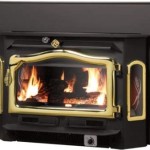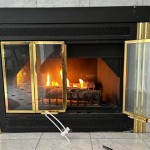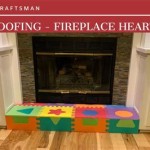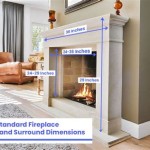Replacement Fireplace Logs: A Comprehensive Guide
The ambiance and warmth of a fireplace are highly prized features in many homes. However, traditional wood-burning fireplaces can present challenges, including maintenance, safety concerns, and environmental impact. Replacement fireplace logs offer a practical and aesthetically pleasing alternative, providing the visual appeal of a real fire without the associated drawbacks. This article provides a comprehensive overview of replacement fireplace logs, encompassing their types, advantages, selection criteria, and safety considerations.
Replacement fireplace logs, also known as ventless or gas fireplace logs, are designed to mimic the look of natural wood burning in a fireplace. They are commonly manufactured from ceramic, concrete, or refractory cement materials, and are carefully crafted to resemble various types of wood, such as oak, birch, and pine. They serve as a primary component in gas fireplaces, whether powered by natural gas or propane, and offer a controlled and convenient source of heat. These logs redirect the heat from the burner to radiate efficiently into the room.
Understanding the Different Types of Replacement Fireplace Logs
Replacement fireplace logs can be broadly categorized based on their material composition and the type of fireplace they are intended for. Understanding these distinctions is crucial for making an informed purchase decision.
Ceramic Logs: These logs are primarily decorative and offer an excellent visual representation of real wood. Ceramic logs are lightweight and generally less expensive than other types. Their primary function is aesthetic enhancement, and they contribute minimally to heat generation. They are best suited for situations where the fireplace is primarily used for ambiance rather than heating purposes.
Refractory Cement Logs: Refractory cement logs are denser and more durable than ceramic logs, designed to withstand high temperatures for extended periods. This material is capable of absorbing and radiating heat more effectively. While they are still realistic in appearance, their primary function is to improve the efficiency of the fireplace. They are generally more expensive due to their robust construction and heat-radiating properties.
Concrete Logs: Concrete logs represent a balance between ceramic and refractory cement logs. They offer a good level of durability and heat resistance, while also maintaining a relatively affordable price point. Their heat retention is good for maintaining consistent warmth after the fire is turned off. Concrete logs will be heavier than their ceramic counterparts.
Beyond material composition, logs are also categorized based on whether they are intended for vented or ventless fireplaces. Vented logs are designed for fireplaces with a functioning chimney, allowing for complete combustion and the safe expulsion of exhaust gases. Ventless logs, on the other hand, are designed for fireplaces without a chimney, utilizing a cleaner-burning fuel and a more sophisticated burner system to minimize the production of harmful byproducts. When selecting replacement logs, it is paramount to choose logs specifically designed for the type of fireplace being used.
Key Considerations When Selecting Replacement Logs
Choosing the right replacement fireplace logs involves several factors beyond material. Evaluating these factors will help ensure a satisfactory experience and optimal performance of the fireplace.
Size and Fit: The physical dimensions of the logs must be compatible with the firebox. Logs that are too large may obstruct the burner or create an unsafe operating condition, while those that are too small may not provide the desired aesthetic effect and impact the efficiency of the fireplace. Precise measurements of the firebox are crucial before purchasing replacement logs. Consider both the width and the depth of the space to ensure proper airflow and heat distribution.
Burner System: The type of burner system used in the fireplace dictates the type of logs that can be used. Different burner systems produce different flame patterns and heat outputs. Make sure the logs selected are compatible with the existing burner system. Consult the fireplace manufacturer's specifications or a qualified technician to confirm compatibility. Some burner systems are optimized for specific log configurations to achieve the desired aesthetic and heating performance.
Aesthetic Appeal: While functionality is paramount, the aesthetic appearance of the logs plays a significant role in the overall ambiance of the fireplace. Consider the desired style and the visual impact the logs will have on the room. Different log sets offer varying levels of realism, wood types, and ember bed effects. Consider the color and texture of existing décor to complement the fireplace logs.
BTU Output: British Thermal Units (BTUs) measure the amount of heat a fireplace produces per hour. Select logs that are compatible with your fireplace's BTU output. Overloading the fireplace with logs designed for a higher BTU output may result in inefficient burning, or even damage the fireplace. Conversely, selecting logs designed for a lower BTU output may not provide adequate heat for the space. Understanding the heat requirements of the room and the fireplace's BTU rating is important for selecting suitable replacement logs.
Safety and Maintenance of Replacement Fireplace Logs
Maintaining the safety and longevity of replacement fireplace logs requires adherence to specific safety guidelines and regular maintenance procedures.
Proper Installation: Proper installation of the logs is paramount to ensure safe and efficient operation. Always follow the manufacturer's instructions meticulously. Improperly placed logs may obstruct the burner, create uneven heat distribution, or pose a fire hazard. If unsure about the installation process, consult a qualified professional. Ensure all connections are secure and that there are no gas leaks.
Regular Cleaning: Over time, dust and soot can accumulate on the logs, diminishing their aesthetic appeal and potentially affecting their performance. Regularly clean the logs with a soft brush or vacuum cleaner attachment to remove any buildup. Avoid using abrasive cleaners or harsh chemicals, as these can damage the logs' finish. Consult the manufacturer's recommendations for cleaning procedures specific to the log material.
Periodic Inspection: Regularly inspect the logs for any signs of damage, such as cracks, chips, or discoloration. Damaged logs may compromise the safety and efficiency of the fireplace. If any damage is detected, replace the affected logs immediately. Also, inspect the burner system for any signs of corrosion or malfunction. Address any issues promptly to prevent more serious problems.
Ventilation Awareness: For vented fireplaces, ensure that the chimney is clear and properly functioning. Blocked chimneys can result in the accumulation of dangerous carbon monoxide gas within the home. For ventless fireplaces, be vigilant for signs of inadequate ventilation, such as headaches, dizziness, or nausea. Install and maintain carbon monoxide detectors in the home to provide early warning of potential hazards. These detectors should be tested regularly to ensure proper functionality.

How Long Do Gas Logs Last To Replace Fireplace

How Long Do Gas Logs Last To Replace Fireplace

Warming Trend Update Gas Logs To Improve Performance And Appearance Walton

Realfyre Golden Oak Vented Gas Log For Small Fireplace 12

Small Gas Logs Reduced Depth Vented And Ventless

The Best Gas Log Sets For 2024 Fireplaces Direct Learning Center

How Long Do Gas Logs Last To Replace Fireplace

Hargrove Classic Oak Vented Gas Fireplace Logs 15 Inch

Top 6 Vented Gas Log Sets Woodlanddirect Com
How To Arrange Gas Logs Howstuffworks
Related Posts








